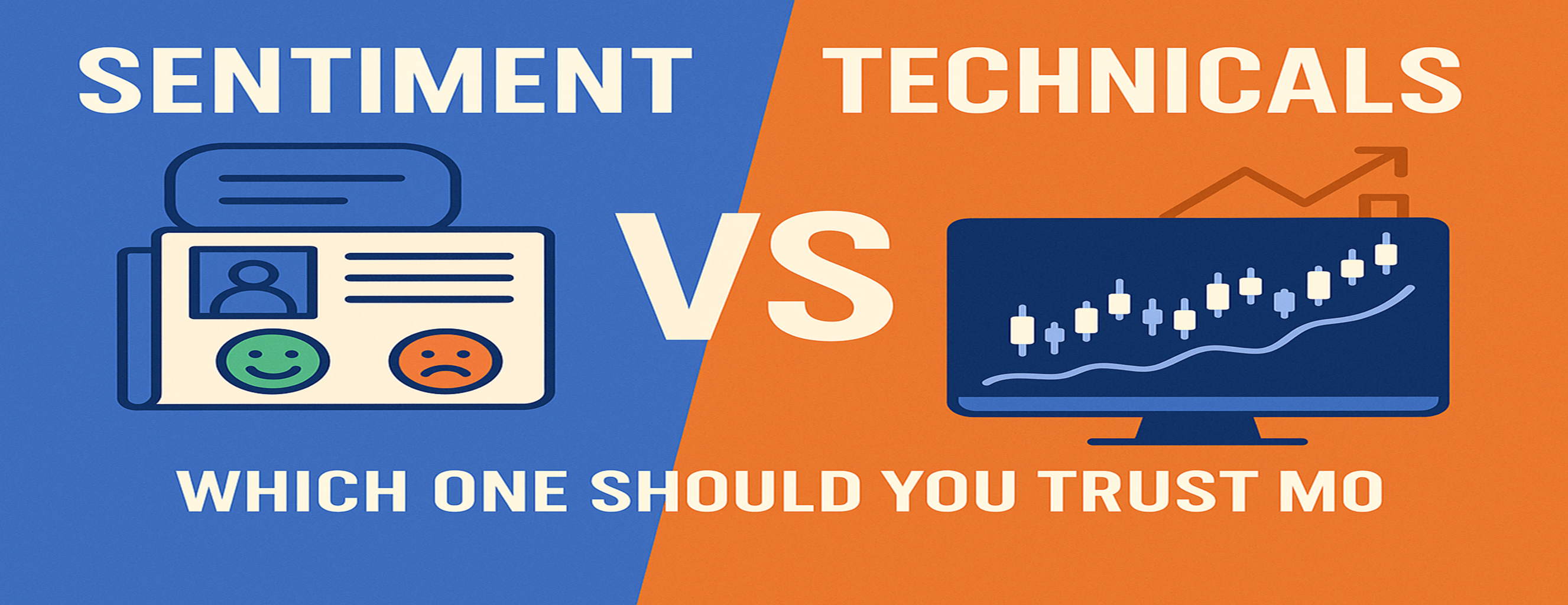
Sentiment vs. Technicals: Which One Should You Trust More?
Sentiment analysis and technical analysis are both powerful tools for traders. One helps you understand the market sentiment from financial news and social media. The other relies on charts, price action, and market indicators to forecast moves. Instead of choosing one, smart traders use both. Platforms like TradingNews let you do that by merging news signals and technical charts into a single view. This way, you can spot opportunities faster and trade with more confidence. Whether you’re doing day trading, forex trading, or just learning, blending these two strategies is the smartest move.
Sina · July 14, 2025
🧠 1. Introduction
Sentiment vs. Technicals: Which One Should You Trust More?
In the fast-moving world of stock trading and forex trading, traders are often split between two main approaches: sentiment analysis and technical analysis. Each method offers its own trading strategies, tools, and insights. But which one really gives you the edge in today’s markets?
At TradingNews, we’ve built a tool that blends the best of both worlds. It takes financial news, runs it through AI-powered sentiment analysis, and visualizes it right beside traditional technical charts. This way, you don’t have to ...
🔒 Sign up to read more
Sign Up Free📊 2. What is Sentiment Analysis?
🔒 Sign up to read more
Sign Up Free📈 3. What is Technical Analysis?
🔒 Sign up to read more
Sign Up Free⚖️ 4. Sentiment vs. Technicals: Head-to-Head
🔒 Sign up to read more
Sign Up Free🧠 5. How TradingNews Combines Both
🔒 Sign up to read more
Sign Up Free🌍 6. Real-World Example: Rate Hikes & Tech Stocks
🔒 Sign up to read more
Sign Up Free📅 7. When to Use Which Strategy?
🔒 Sign up to read more
Sign Up Free✅ 8. Final Thoughts & Takeaways
🔒 Sign up to read more
Sign Up Free🚀 Unlock Member-Only Insights
This content is reserved for TradingNews24 members — log in or sign up for free to access real-time market signals and exclusive tools.
Comments
No comments yet. Be the first!